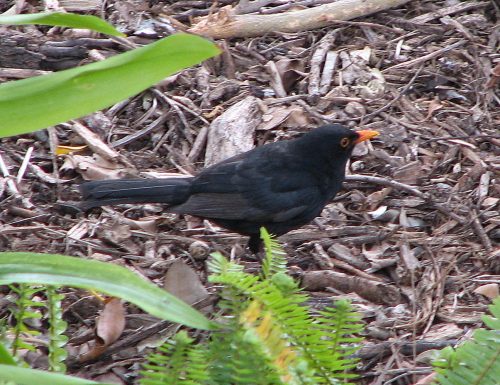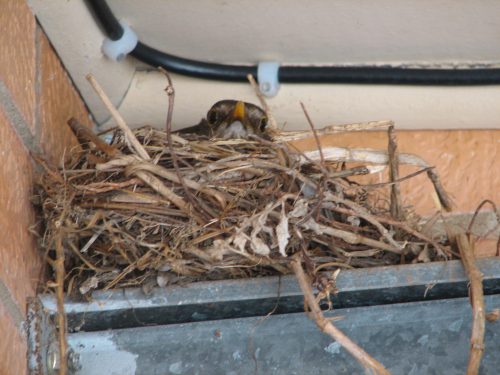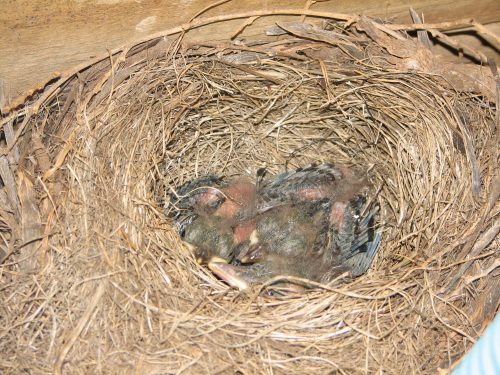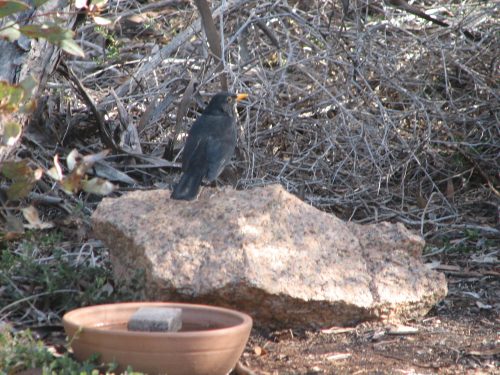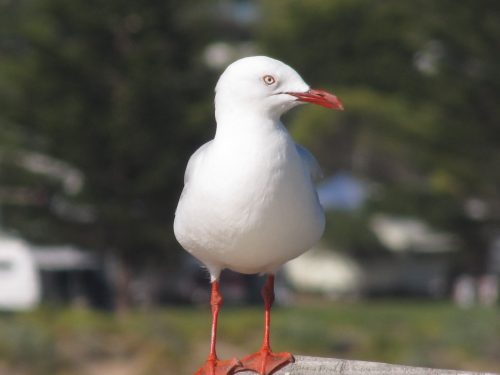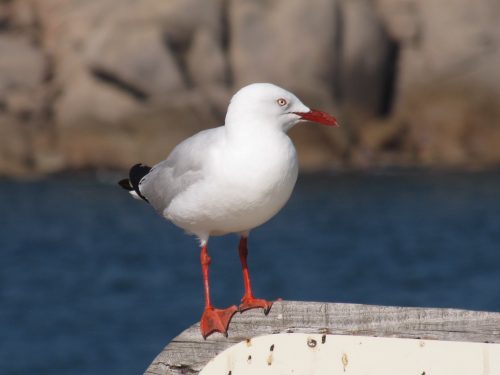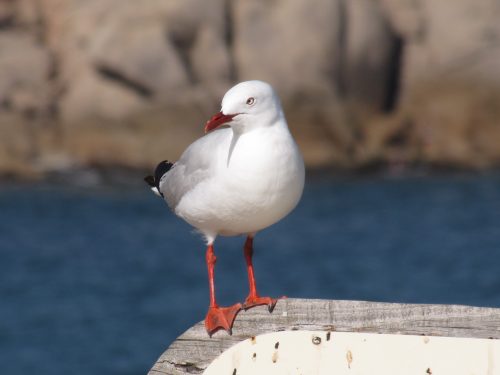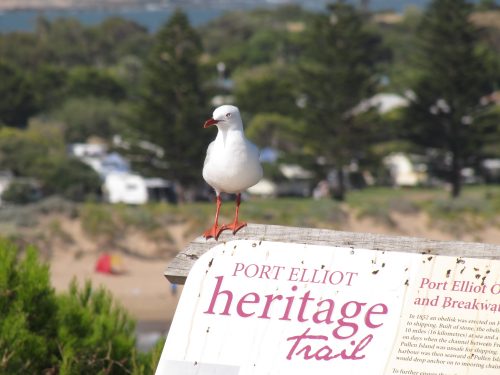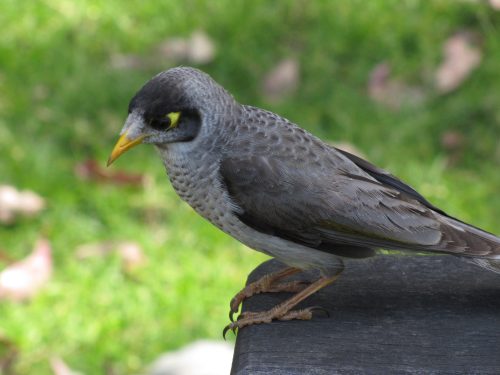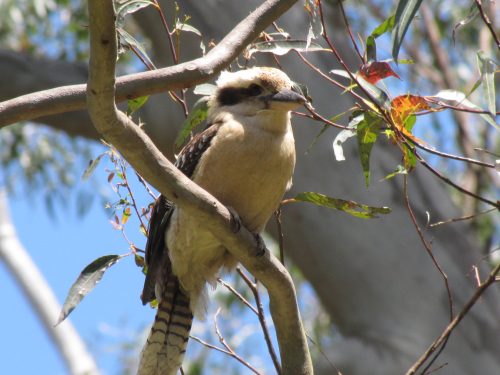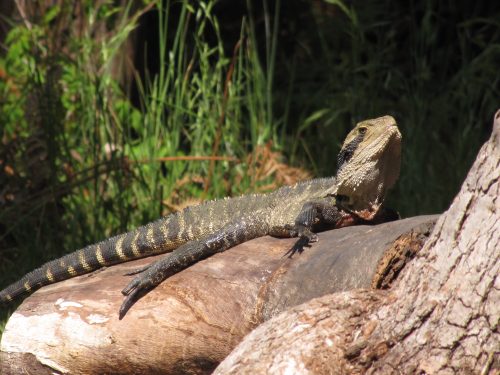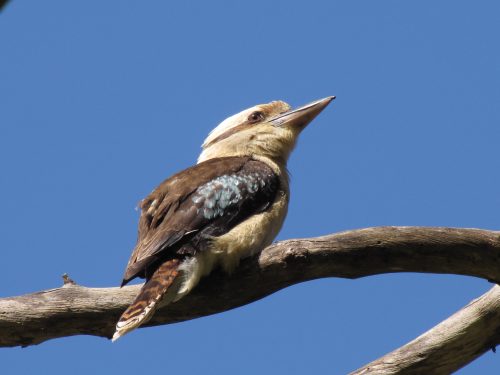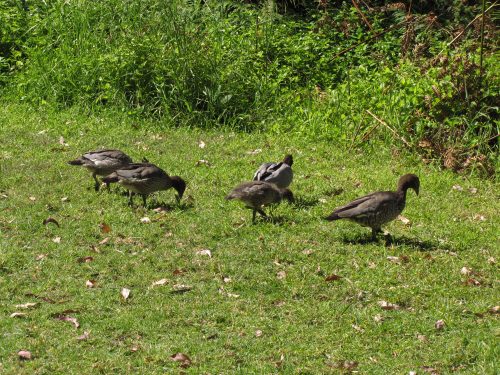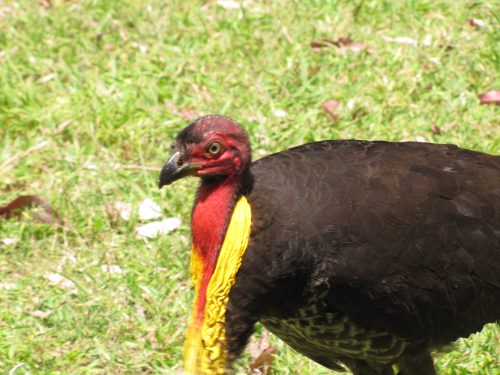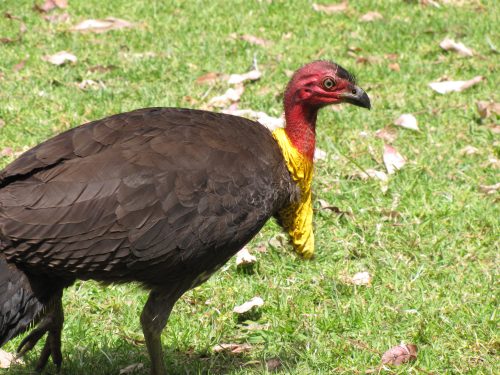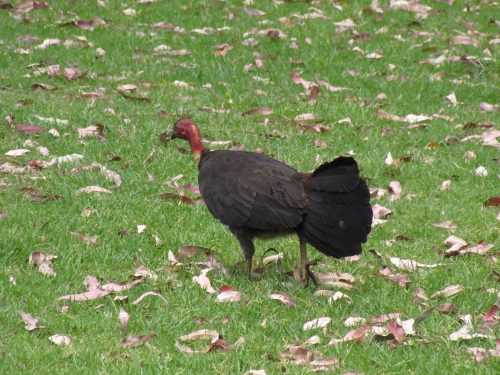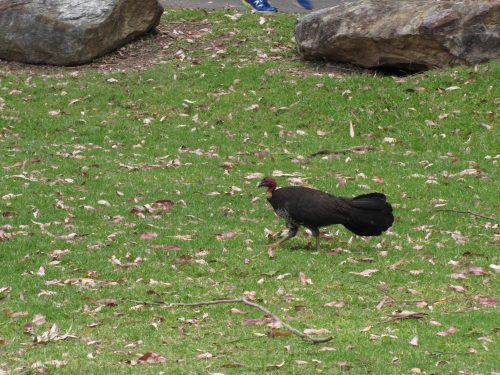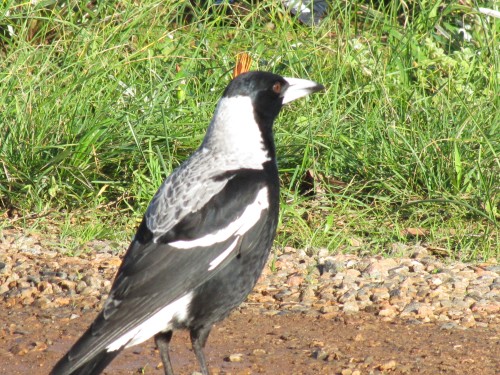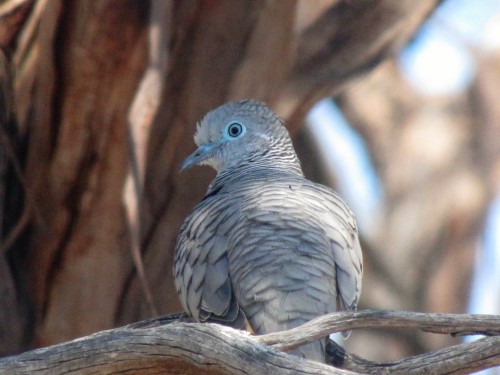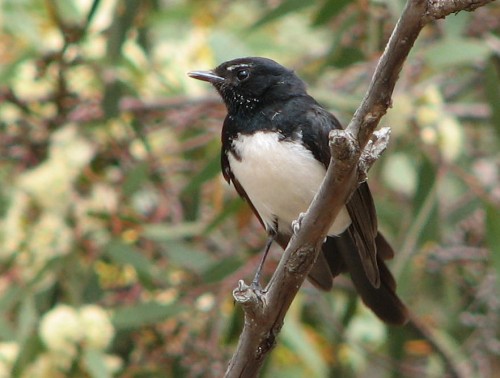A story about Blackbirds, Honeyeaters and Cats
Common Blackbirds
Nearly 11 years ago, I wrote a simple little article on this blog about Common Blackbirds (click to read).
Never did I imagine that it would be so popular. It consistently is one of the ten most read articles on this site, and with nearly 300 comments from readers, it has obviously struck a chord with my readers.
A few days ago, one of my readers – Sue – wrote a wonderful account of the Common Blackbirds in her garden, along with comments on honeyeaters and their interactions with her pet cats. I found this account so fascinating that I have published it here in full so that more readers can enjoy her experiences.
Hi Trevor,
Great massive Blackbird thread!
I thought I would add our Blackbird experience for your consideration.We have a medium-sized block in Kensington, Adelaide, so I have a bit of garden surrounding the old villa. We have two cats, which live entirely inside with the amenity of a professionally built, fully netted enclosure on one side of the house from verandah to fence.
The honeyeaters were the first to find a way into the enclosure, by dropping through the ceiling netting which has a slightly larger grid than the wall netting, to get to the citrus trees inside. They were always faster than the one cat who has any real hunting ability. Their other advantage is that cat is deaf – so if he doesn’t see them, he doesn’t know they are there.
Then the resident pair of blackbirds learnt the same trick. For them the strip of garden along the fence and the mulched area around the compost bins are a rich source of forage. They are also faster than the cats. And they also enter and exit at speed, despite the bird seeming too large for the net.
The enclosure has vine growing over it. The vine is trained underneath on wires, and grows up through the net.
Honeyeaters chose to nest in the vine above the net. They raised a chick, then moved to the bamboo for the next round.This summer the blackbirds have built a nest in the vine IN the enclosure, UNDER the net. They fledged one enormous chick just before Christmas and to our delight have gone another round with two, possibly three, hungry chicks being fed as I type.
We were worried how the baby might get out safely, but we actually saw it fledge over a weekend. It was encouraged out of the nest, to hop around the branches, then encouraged up through the net. We have seen it in the rest of the garden with its parents several times.Mrs B doesn’t worry even when I am watering right under her. Previous behaviour for the blackbirds, the honeyeaters and even the wattlebirds is to nag me in the garden for the rain wave sprinkler then enjoy the ‘rain’. It’s not just Aussie humans that like running under the sprinkler in the hot weather.
This year the rosellas have the small hole in an old peppercorn tree, and the lorikeets had the large hole in the same tree, and were both successful.
The rest of the garden is not cat free, and there are definitely cats, rats, foxes, as well as possums and the annual koala, using it at times, but the complexity of the cat enclosure and the presence of the cats seems to keep the (non-resident) predators away from it.
In a highly artificial urban environment, we would all prefer if native species could thrive, but sometimes the imports are better suited to holding a niche. Compared to mynahs, the blackbirds seem to be a lesser of two evils. And lorikeets have proved to be pretty dominating over the smaller rosella..
Happy bird encounters, all… Sue
Thank you, Sue, for a wonderful description of the birdlife and wildlife in your suburban garden. I wish more cat lovers would be as responsible as you are with a special enclosure.
Happy birding,
Trevor
Further reading:
- Common Blackbirds – the article which started it all
- Do Blackbirds swoop? How to deal with aggressive bird behaviour – another article with over 100 comments from around the world.
- Keep your cats inside – an article I wrote some time ago about the problem of cats to the Australian environment.
- Great birding moments #7 Koala
Nice pose for a Silver Gull
Earlier this week my wife and I celebrated another anniversary. My – how the years have flown by. We always try to do something special for our anniversary and agreed that the weather was suitable for a long drive and a picnic, finished by dinner at a favourite restaurant. After an early morning chat on the phone with our grandchildren, we set off towards Milang, which is about 50 kilometres from our home. We stopped at the local bakery to buy our lunch, a Cornish pasty each, and a large lamington to share.
We took our lunch down to the shore of Lake Alexandrina and had a picnic lunch on the lawns there. The largest river system in Australia, The Murray-Darling Basin, flows into this large lake, which in turn empties into the Southern Ocean near Goolwa. While we ate our lunch we watched some children playing with their dogs and on the playground. I took note of the birds I could see or hear, but things were rather quiet on that front – until someone disturbed a large flock of very noisy Little Corellas nearby. I have often thought that I would like to stay in the local caravan park right next to the lake, but I concluded that you would not need an alarm clock; the parrots would see that you woke at dawn, or even at first light.
From Milang we drove on towards Goolwa and explored Hindmarsh Island – but I will write about that part another day. Later in the afternoon, we stopped at Horseshoe Bay, Pt Elliot. This small town on the south coast of the Fleurieu Peninsula is a popular holiday destination, being just over an hour’s drive from Adelaide. We stopped for a cuppa and some homemade biscuits in the car park at the lookout. I parked so that we had a great view over the bay. In South Australian history, this spot is quite important. Encounter Bay, which stretches for some distance to the south-east, was where English explorer Captain Matthew Flinders and the French explorer Nicolas Baudin met in April 1802.
While we were having our cuppa, a solitary Silver Gull settled on an interpretive sign just in front of our car. It obligingly posed for a series of photos which I am sharing here today. Silver Gulls are the most common gull found all around the coastline of Australia. It can also be seen far inland where suitable bodies of water exist, such as river systems, lakes, reservoirs and swamps. It can be very common in large numbers at rubbish tips, ovals, picnic grounds and beaches.
Further reading:
Wildlife of Lane Cove National Park
Over recent years, my wife and I have visited the Lane Cove National Park just west of Chatswood in the heart of Sydney. We try to get there whenever we visit family living in Artarmon nearby. Despite being in the heart of a bustling part of the city, this park not only preserves some remnant bushland for all to enjoy, it also boasts a good range of wildlife. I am particularly interested in the birdlife – hence this website. I also take an interest in other forms of wildlife, as well as the plant life, an interest which flows over from my wife.
On a visit there last October, I managed a few photos of some of the resident birds, as well as some other wildlife. A few weeks ago I shared a photo of two Long-necked Turtles here. I have also written about the local Sulphur-crested Cockatoos and the Australian Wood Ducks I saw in the park.
One of the very common birds in this area is the Noisy Miner, shown in the photo above. This individual landed on the picnic table alongside where we were sitting. I guess it was looking for a handout of human food, just like the local Laughing Kookaburras and Brush Turkeys. Noisy Miners are certainly the most common of the Australian honeyeaters in this part of Sydney.
I have noticed on all of our visits to this park that the Eastern Water Dragon is a very commonly observed reptile in the park. I think that we have seen many of these lizards on every visit to the park. The one shown in the photo below was quite friendly and unafraid, coming up quite close to where we were sitting.
Further reading:
Brush Turkeys up close
On many occasions here I have written about some of the birds I have seen and photographed while on visits to family in Sydney. One of our favourite places to visit while in Sydney is the Lane Cove National Park, just a short distance west of Chatswood in the northern suburbs, and only a ten-minute drive from my son’s home.
When we visit we usually take a picnic lunch, or if only going in the afternoon, we certainly take the makings for afternoon tea, including a few biscuits, or some fruit. We like to set up our folding chairs and make a cuppa, in a spot where we can see the river, as well as a good view of the trees. Such spots usually provide us with good birding as well.
If you stay in this park for a few hours or visit frequently, the chances of seeing a good range of local and visiting birds are very high. This park protects a large section of remnant scrubland. While there are roads and tracks through the park, as well as clearly defined picnic areas with barbeques, picnic tables and other public facilities, the vegetation left preserved gives the visitor a good impression of the natural environment as it existed before settlement in the late 1790s.
On this particular visit last October, my wife and I had a few hours leave from looking after our grandchildren. We set up our chairs in a good position and proceeded to eat our lunch. We had hardly started eating our sandwiches when we were robbed. Not only were the Laughing Kookaburras cheeky, so were the resident Australian Brush Turkeys, shown in the photos in this post.
Two of them came mooching around while we were having a post-lunch cuppa. They were obviously on the take and came up within a few centimetres of where we sat. We don’t feed birds that are supposedly wild. These individuals were behaving like they often get handouts of human food. Once they realised that we were not going to comply with their wishes, they skulked off elsewhere. They probably tried the same trick on other people enjoying a picnic.
Further reading:
- Lunch snatching birds
- Five reasons to love Brush Turkeys – from the ABC website
Happy Christmas
HAPPY CHRISTMAS to all of my readers.
I watched the news this evening and saw that terrible weather conditions are being experienced by many people around the world. From storms, heavy rain, blizzards, to deep snow and heat waves. Our own South Australian capital city, Adelaide, had the highest temperature of all the cities of the world: 41.3C (106F). I live only 80km south east of Adelaide and it was very hot here too – around the same temperature; it may have just touched 42 for a while. Except for a trip to church early in morning, I stayed indoors in air-conditioned comfort. Thankfully, cooler weather and rain is forecast for later in the week.
Birds in hot weather
Yesterday I wrote about the importance of regularly providing fresh water for the birds in your garden, especially in the type of hot weather we experience in summer here in Australia. They really appreciate it, and this provides opportunities for the avid birder to watch them through a nearby window without disturbing them in any way.
Because of the hot weather, I was reluctant to get out and about. Despite the heat, I was aware of some of the species outside. Some of our birds have loud calls, and we had a very quiet Christmas with no visitors. Several times I heard Peaceful Doves calling, and there was the persistent call of a baby Red Wattlebird just out of the nest. Through one of our windows I saw our resident Willie Wagtails a few times, and this evening, when I briefly braved the elements, I disturbed a small flock of Galahs from one of our trees.
The resident Australian Magpies came frequently for a drink at the bird bath, and earlier this morning I observed a loose flock of about 25 Little Ravens flying overhead. The resident House Sparrows kept in the shade for most of the day, coming to the water in the birdbaths frequently. We usually hear the noisy and gregarious New Holland Honeyeaters, but they were rather subdued today. So were the Spiny-cheeked Honeyeaters and the White-plumed Honeyeaters. I also briefly heard the small family of Superb Fairy-wrens which occupy the bushy parts of our property.
I just checked the weather radar; there are storms on the way. Tomorrow I must get outside a few times and keep a look out for Swifts; just their kind of conditions.
Once the weather cools a little, I hope to get out and about a few times. It is about time I took some more photos to share here.
In the meantime, I hope that you have a wonderful Christmas wherever you are, and whatever the weather.
Good birding,
Trevor
